Key takeaways:
- Songwriting awards validate artists’ efforts and can enhance collaborations, leading to new opportunities.
- Fair royalty splitting fosters trust among collaborators and prevents disputes that can harm relationships.
- Effective communication and listening during collaborations can spark creativity and ensure all voices are heard.
- Flexibility in royalty distribution, reflecting contributions accurately, strengthens partnerships and maintains harmony.

Understanding songwriting awards
Songwriting awards serve as a celebration of creativity and artistry, shining a spotlight on the hard work behind each lyric and melody. I remember attending an awards ceremony where the excitement in the room was palpable; it reminded me of the years of effort and vulnerability that songwriters put into their craft. Have you ever felt that thrill when your favorite songs are recognized? It’s a moment of validation for artists and can propel their careers in unexpected ways.
While the accolades are important, songwriting awards also highlight the collaborative nature of the music industry. I’ve witnessed firsthand how winning an award can strengthen partnerships among co-writers and producers. It raises an interesting question: How often do we consider the collective effort behind a hit song? Recognizing the contribution of each member involved not only fosters goodwill but also strengthens relationships in a field where collaboration is key.
Moreover, these awards can provide opportunities beyond mere recognition. I once spoke to a songwriter who won a prestigious award, and she shared how it opened doors to new connections and songwriting gigs. Isn’t it fascinating how a simple trophy can lead to exciting new paths? Understanding the true value of songwriting awards goes beyond the accolades and accolades; they can be catalysts for personal and professional growth.
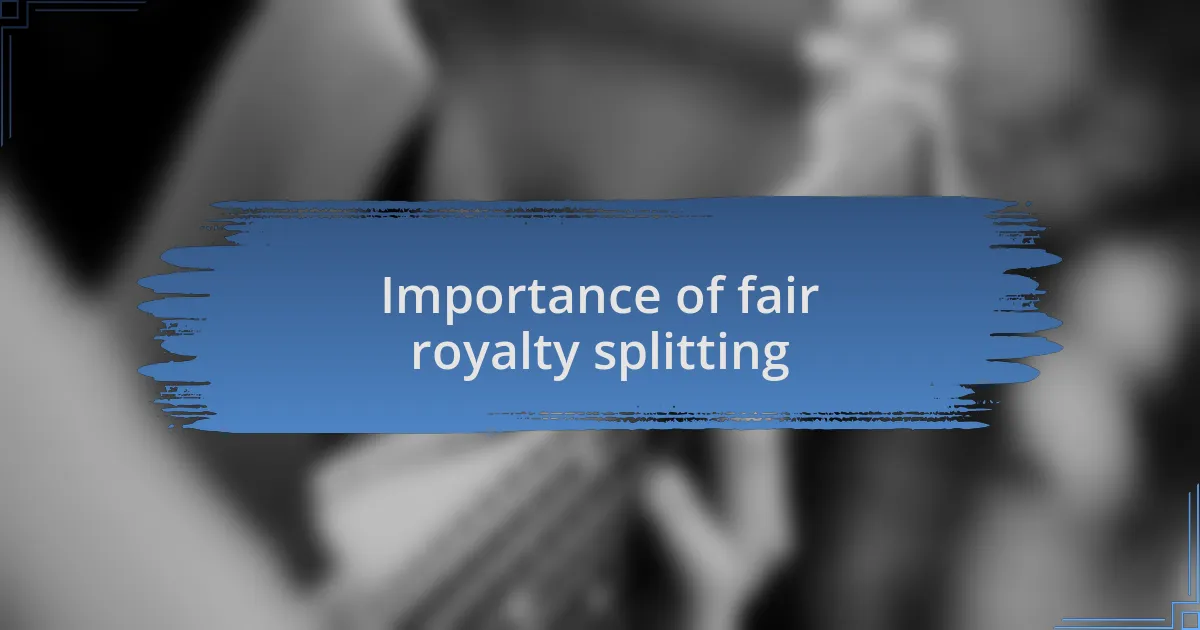
Importance of fair royalty splitting
Fair royalty splitting is essential for fostering trust among collaborators. From my experience, when everyone feels valued and compensated fairly, it creates an environment where creativity can thrive. Wouldn’t you agree that a songwriter’s motivation is often tied to how their contributions are recognized?
Without clear agreements on royalties, tensions can arise, leading to disputes that may ruin relationships. I remember a project where one co-writer felt overlooked, which not only affected their enthusiasm but also the overall vibe in the studio. It made me realize just how crucial it is to have open discussions about contributions and splits right from the start.
Additionally, fair royalty distribution can help sustain long-term partnerships. In a competitive industry, knowing that your efforts are respected encourages collaboration instead of rivalry. Have you ever seen partnerships fall apart over financial disagreements? I have, and it reinforces my belief that transparency in splitting royalties can save friendships and careers from unnecessary strain.
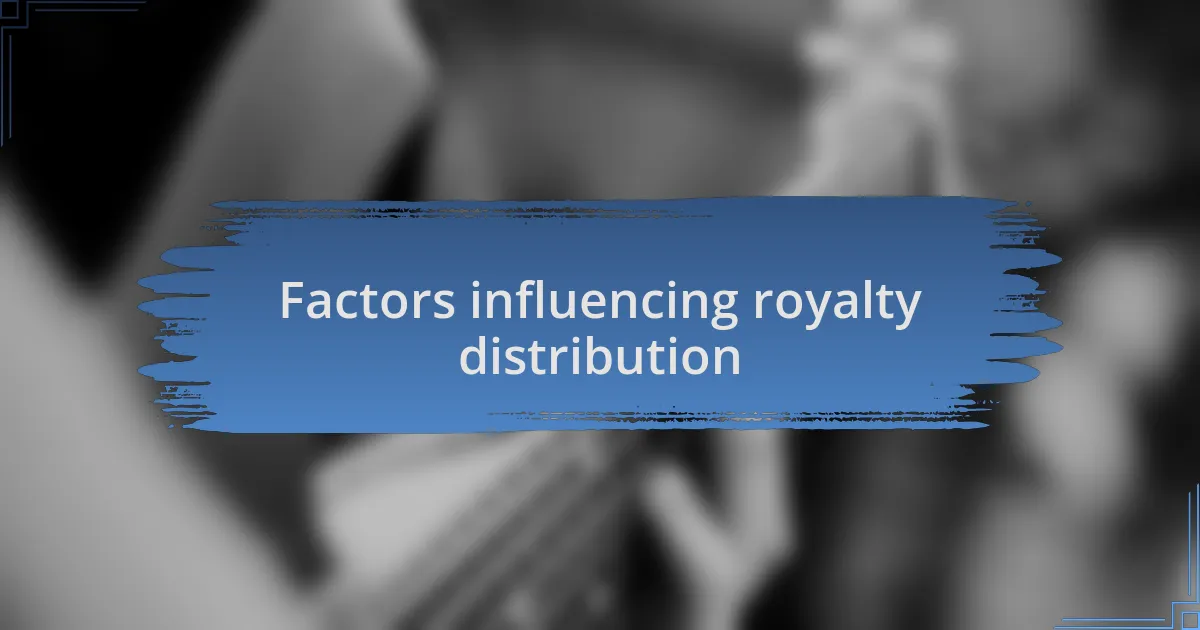
Factors influencing royalty distribution
When considering the factors influencing royalty distribution, one key element is the contribution of each collaborator. I recall a songwriting session where one member brought in the melody while another crafted the lyrics. In the end, we decided that the person who developed the core musical idea should receive a higher percentage. How do you feel about balancing contributions that vary in effort and impact?
Another significant factor is the marketability of the song. It’s interesting how certain hooks can resonate more with listeners and create a more profitable outcome. There was a time when I wrote a chorus that really took off, driving the song’s success. I stood by my belief that the royalties should reflect this advantage, respecting the song’s commercial potential while recognizing each person’s input.
Lastly, the dynamics of the collaboration itself play a crucial role. Trust and communication among team members can greatly affect how royalties are perceived and agreed upon. I’ve been part of teams that were open and communicative, making it easy to negotiate splits. But in more rigid environments, even small disagreements can fester over time, skewing the fairness of distribution. Have you ever been in a situation where the relationship was strained over finances? It really shows how vital a good team dynamic is in establishing a fair royalty framework.
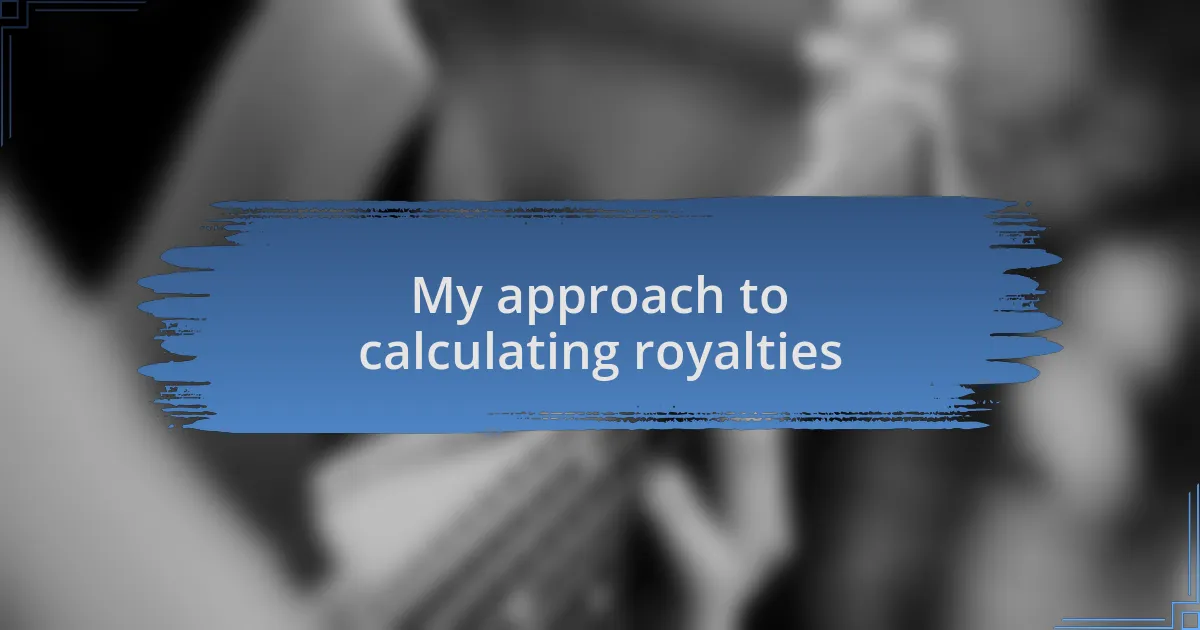
My approach to calculating royalties
Calculating royalties can be a nuanced process, and I’ve found that starting with clear communication about each contributor’s role is vital. For instance, during a recent project, we conducted a thorough discussion about what each person brought to the table. By mapping out our contributions upfront, we fostered a mutual understanding that made the final distribution feel fair and transparent.
Another aspect I incorporate into my royalty calculations is the emotional weight of contributions. I remember a time when I poured my heart into a bridge that ultimately shifted the tone of the song. Although it wasn’t the most prominent section, I felt it carried the essence of the piece. This experience taught me that sometimes, the emotional impact of a contribution can warrant special consideration in how royalties are divided.
I also believe in being open to revisiting those agreements. In my experience, as projects evolve, so too do the contributions and the dynamics at play. Have you ever noticed how a song can change during production, leading one part to shine more brightly than originally anticipated? This fluidity can call for adjustments in the royalty splits, ensuring that everyone feels valued throughout the entire creative journey.
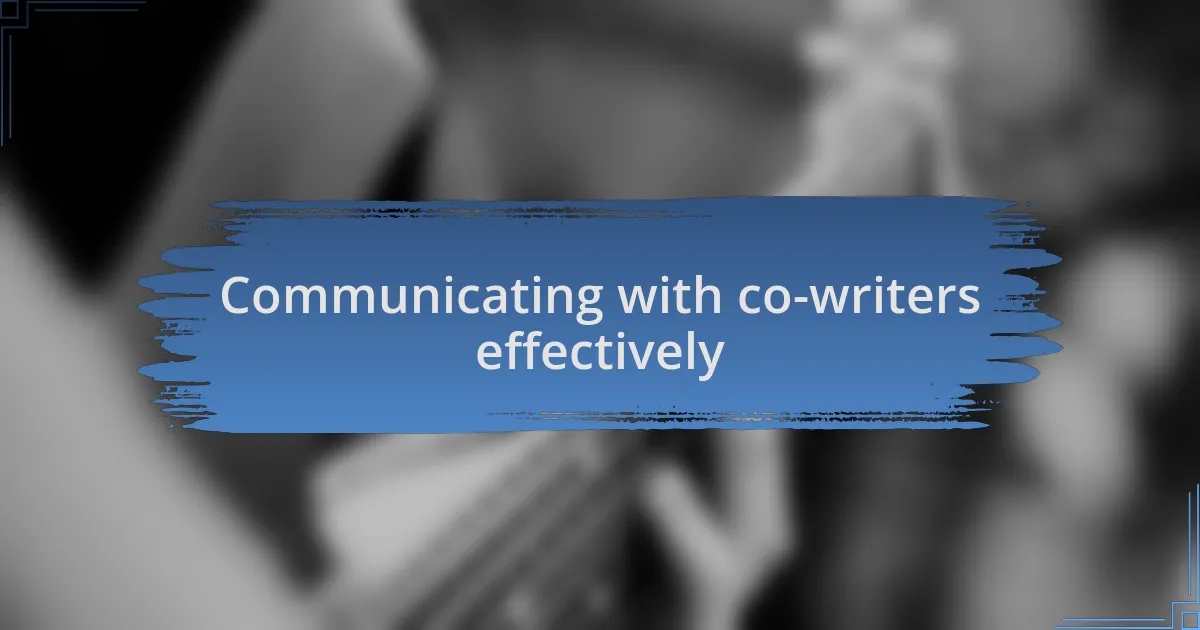
Communicating with co-writers effectively
Effective communication with co-writers is essential for a successful collaboration. I once worked with a team where we set aside dedicated time for informal discussions. These sessions allowed us to share our thoughts and feelings about the project, which not only sparked creativity but also built trust, making it easier to address any disagreements later on.
Listening is just as crucial as speaking in these conversations. I remember a time when a co-writer hesitated to share their ideas, fearing they wouldn’t resonate with the group. By encouraging them and actively seeking their input, I learned that sometimes the quietest voices contain the most profound insights. Have you ever found that the best ideas come from unexpected places? This experience taught me that fostering an open environment can lead to breakthroughs you might never have anticipated.
Navigating creative differences can be challenging, but I believe it’s about seeing each other as partners rather than competitors. In one instance, a disagreement arose over a song’s direction, and instead of pushing my own agenda, I suggested we each articulate our vision for the track. This approach not only clarified our intentions, but it also reinforced our commitment to collaborative success. Why not try this strategy when you face a similar roadblock? It could transform a heated exchange into a harmonious exploration of possibilities.
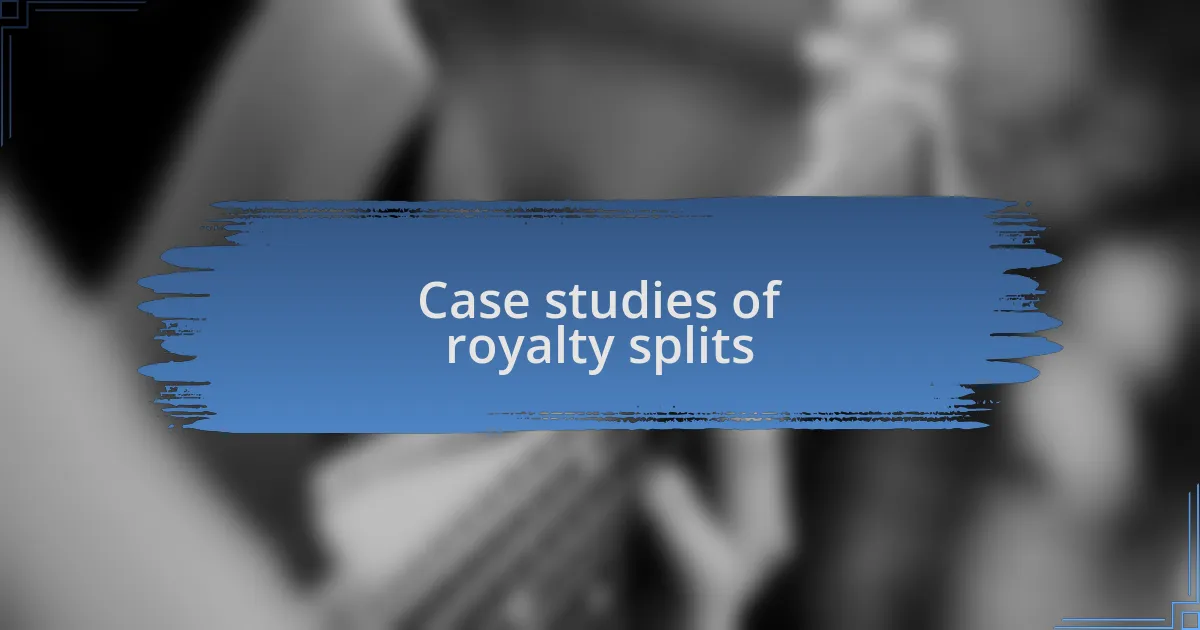
Case studies of royalty splits
When it comes to royalty splits, I’ve encountered some eye-opening experiences that have shaped my views. In a recent collaboration, my co-writer and I decided to divide our royalties based on contribution rather than an equal split. We used a points system, where each of us rated our contributions, resulting in a more nuanced distribution that felt fair to both of us. This method not only honored our efforts but also strengthened our partnership as we both felt valued.
Another instance involved three writers coming together for a project. Initially, everyone agreed to a simple 33.3% split. However, as we delved deeper into the songwriting process, it became clear that one of us was dedicating significantly more time and effort to the project. After a candid discussion, we adjusted the royal allocation to reflect the actual involvement. This change not only alleviated any underlying tension but also fostered a sense of accountability. Have you ever experienced a situation where a conversation led to a more equitable outcome?
In another case, I collaborated with a duo who had quite different perspectives on fairness. They believed in a 50-50 split, regardless of contribution. However, as we worked together, it became apparent that one member was more involved in the production phase. I proposed introducing a tiered royalty system, which allowed us to acknowledge varying levels of participation while still preserving their foundational agreement. It’s fascinating how a flexible approach can lead to greater satisfaction, don’t you think? This adaptability has become a cornerstone practice in how I navigate royalty discussions.

Tips for successful collaboration
Successful collaborations hinge on open communication. I remember a time when my co-writer and I sat down to discuss our creative visions for a song. Instead of making assumptions about each other’s ideas, we shared our thoughts freely, which led to a much richer final product. Have you ever noticed how a simple conversation can completely change the direction of a project?
Building trust among collaborators is another essential tip. I once teamed up with a new artist who was unsure about sharing their ideas. By expressing my own vulnerabilities and uncertainties, I created an environment where they felt safe to contribute. The result? A fusion of our styles that neither of us could have achieved alone. It’s incredible how trust can unlock creativity, isn’t it?
Lastly, it’s crucial to establish clear roles early on. In one collaboration, we sketched out each person’s responsibilities right from the start. This clarity minimized conflicts later, as everyone knew what they were accountable for. Reflecting on this experience, I realize that having defined roles not only streamlines the process but also ensures that each person feels a sense of ownership. How have you set roles in your previous collaborations to keep the process running smoothly?